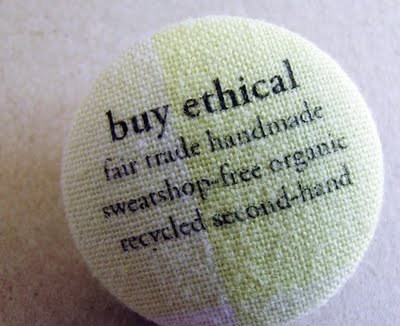How To Have a Sustainable and Ethical Wardrobe

https://bluecaravanblog.wordpress.com/2010/10/11/the-ethical-clothing-pledge/
November 16, 2017
What does it mean to have a sustainable and ethical wardrobe? Do you know what happens to your clothes after you throw them away? Sustainability most simply means having high quality clothing that lasts a very long time – longer than the life cycle of fast fashion (trendy clothing). Trendy clothing is normally made in factories which have poor working conditions for their workers as well as use cheap and toxic materials.
So, how does one go about having a sustainable and ethical wardrobe? Wouldn’t throwing out all of my clothing be harmful to the environment? Well, the best thing to do would probably to donate your clothes – to family members, an organization, etc… Secondly, you could adopt the “French Wardrobe” which is where you have 10-15 timeless (never go out of style) pieces that can be mixed and matched, are high quality, and are made of organic materials such as cotton. It is especially important to choose organic materials over synthetic because non-organic garments usually contain dyes, pesticides, other chemicals that are transferred to the skin when you wear them. As we all can imagine, this is terrible for your health. Some synthetic clothing even contain neurotoxins which, over time with repeated wear, can deteriorate your basic motor skills over time. One cotton t-shirt is said to have 500mg of pesticides according to Clara Vuletich in TEDx (featured below) – that’s two handfuls. Two handfuls of pesticides that comes in contact with your skin every time you wear it.
To assure whether a brand is ethical or not, you can heavily research the brand. I like to use an app called “Good On You” which rates the brand on three things: Labor, Environment, Animal. Labor obviously referring to the conditions in which the people work, how well they are being paid, whether they’re being forced to work or not, etc. Environment is referring to the brand’s resource use and disposal energy use, carbon emissions, impacts on water, as well as chemical use and disposal. Lastly, the Animal rating takes the use of fur – angora, down feather, shearling, karakul, exotic animal skin, and hair into account. They also consider wool use including “mulesing” and whether and how brands use leather. The overall rating is on a scale of 1 (we avoid)-5 (Great). A four star rating is called “Good”, three stars is called “It’s a start”. and a two star rating is called “Not good enough”.
It’s important to know how your clothes are being made, what material is being used, and how your clothes will impact you as well as the environment later on. I encourage everyone to shop ethically with everything, not just clothing.


